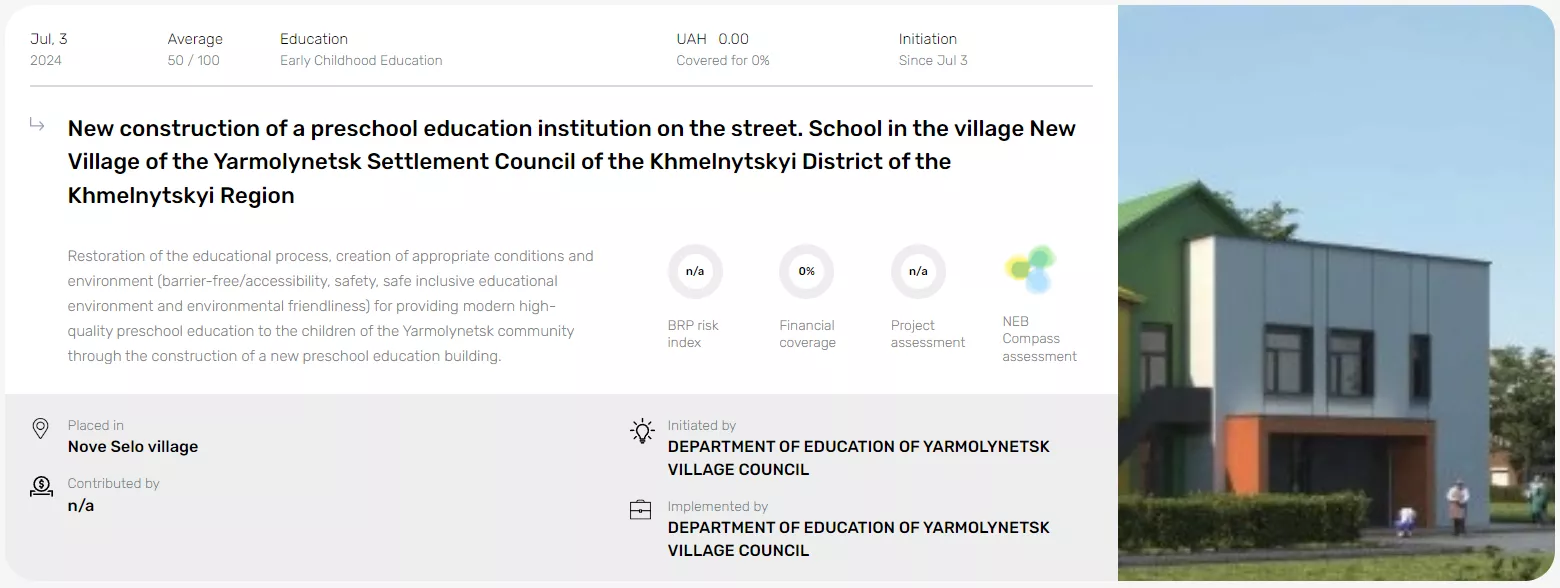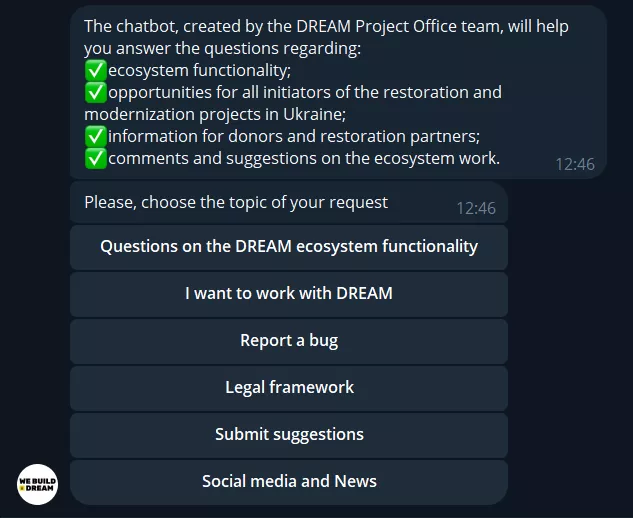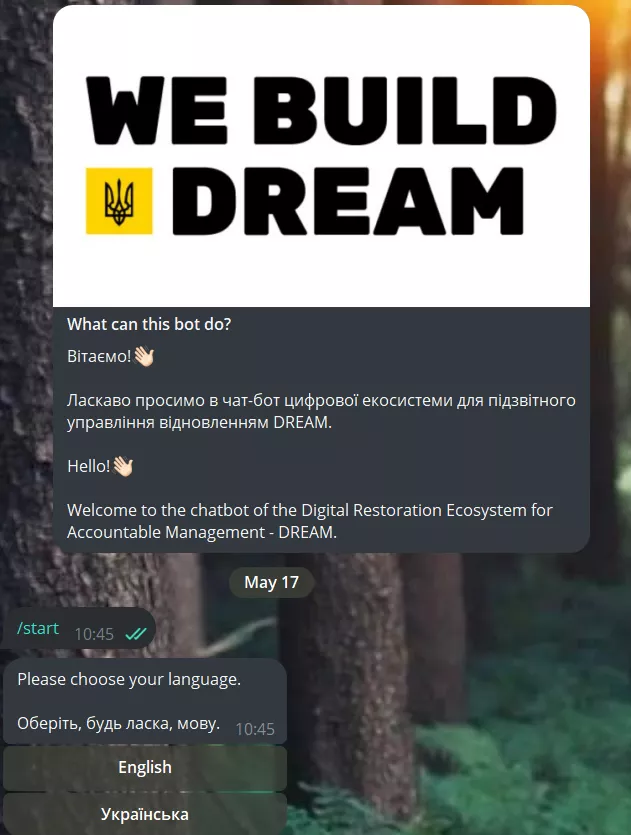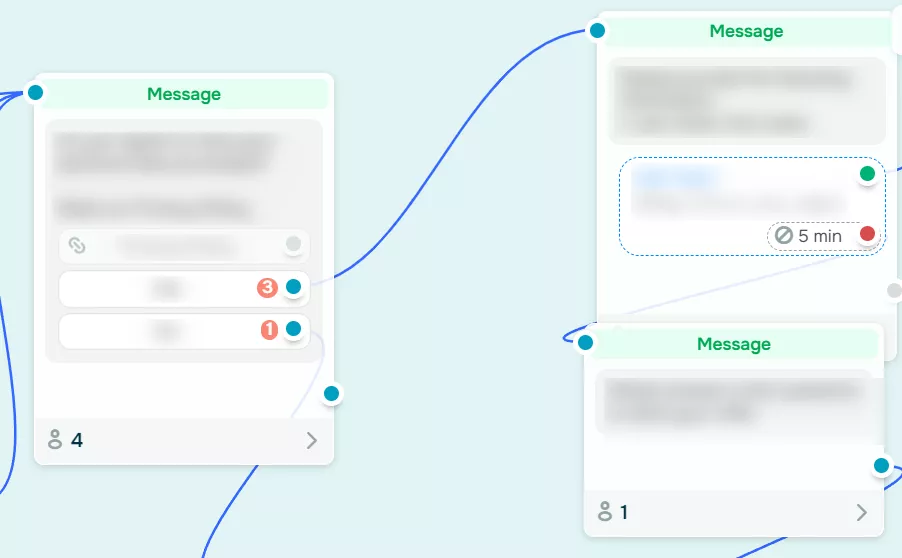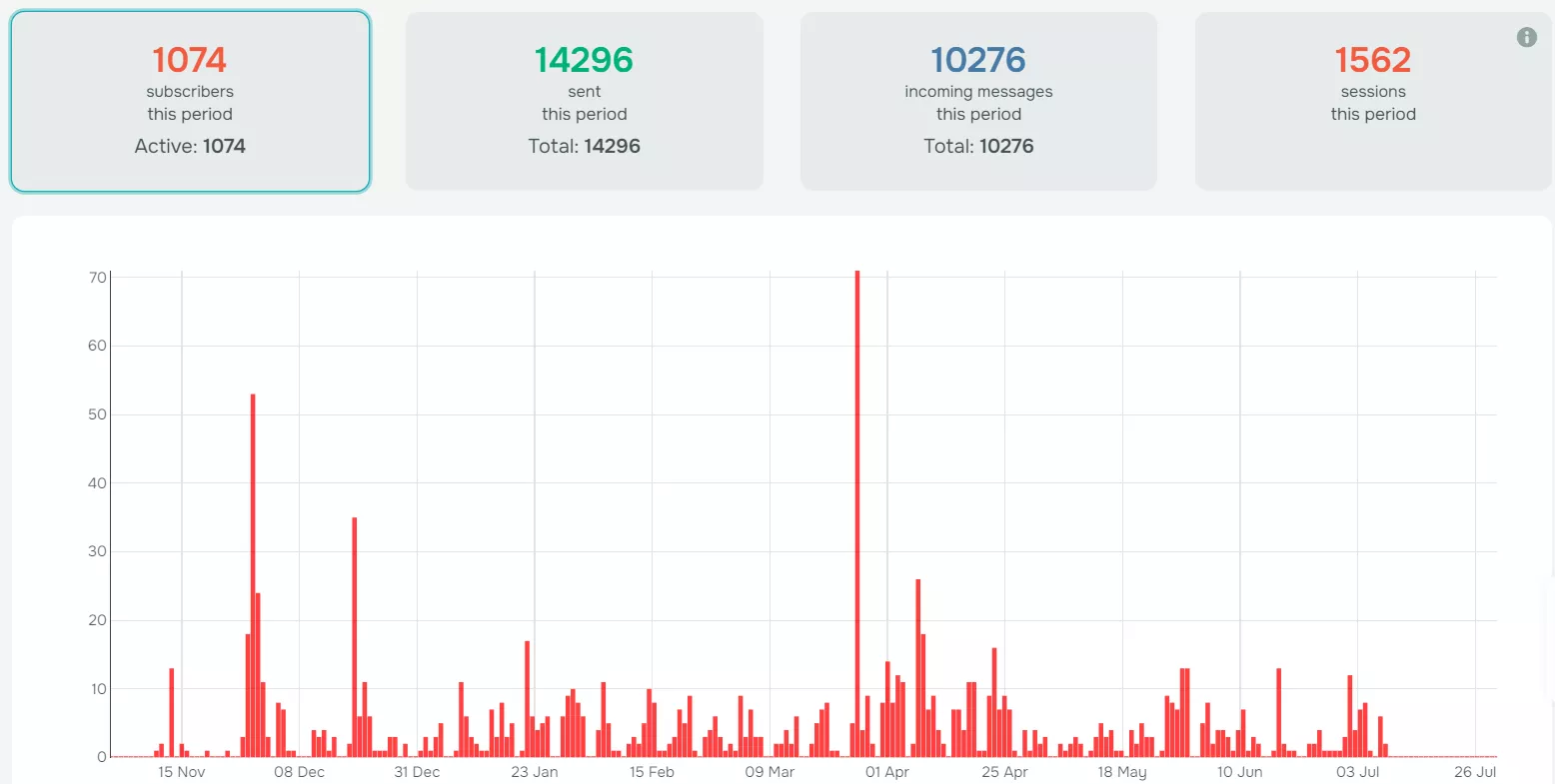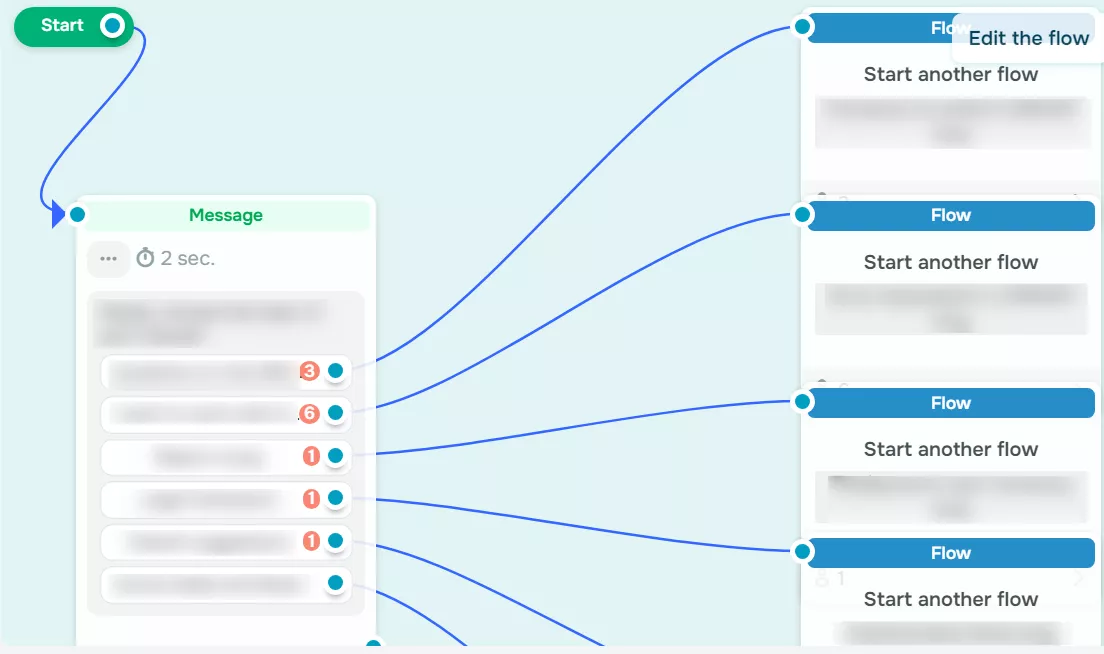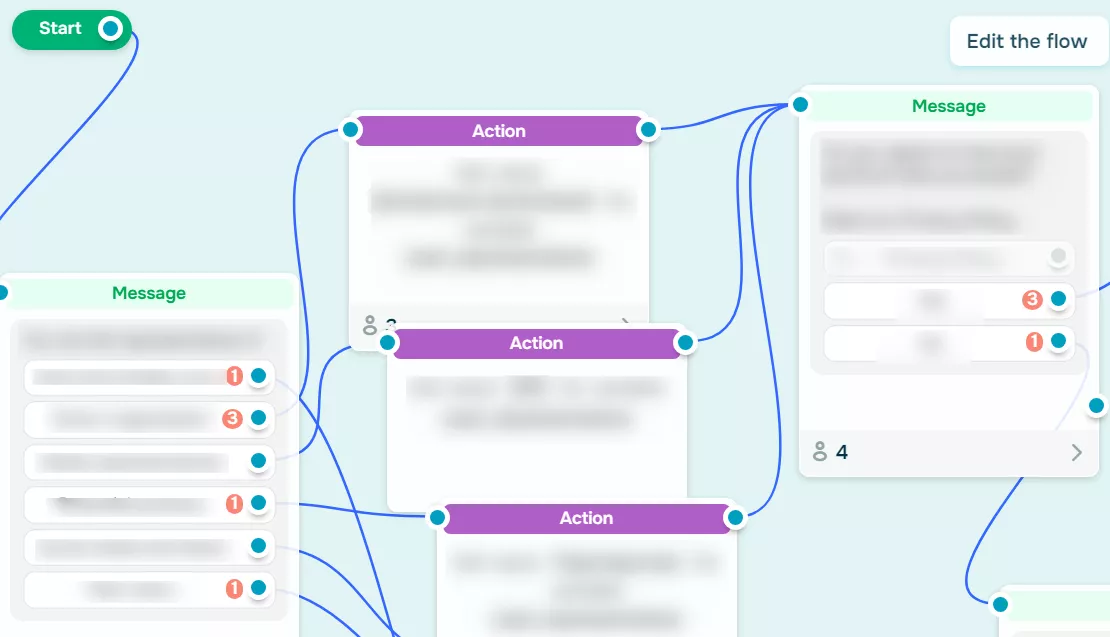Chatbot for a Government System: Two Weeks to Develop a Bilingual Automated Assistant for DREAM
Based on our experience, it takes 4 to 8 weeks to develop a full-fledged chatbot from scratch. However, when we were approached by a project to implement an ecosystem that is crucial for the country and its restoration, we knew it was important to be quick. We then did our best to deliver the service as soon as possible.
In just two weeks from the start of development, users of the system were able to try out the first version of the chatbot. Read more about this project in our case study.
Project: DREAM State Digital Ecosystem for Recovery Management
Period: November 2023 to February 2024
Region: Ukraine
Service: Chatbot development
Netpeak Ukraine project team: Leonid Korenovsky and Vitaliy Ivanov (email marketers); Dmytro Goncharov and Violeta Husak (project managers); Olga Belik (content marketing specialist).
The DREAM team: Denis Ivanov (Implementation Manager, DREAM Project Office)
The Client
DREAM is a unique government electronic ecosystem for recovery management. It provides a single digital path for all recovery and modernization projects in Ukraine. Projects can be initiated by municipalities, regional administrations, ministries, and departments, as well as the Agency for Restoration and its regional services. The DREAM platform ensures transparent and efficient implementation of these projects at the national, regional, and local levels. DREAM collects, organizes, and publishes open data on all stages of recovery projects in real time, implementing the highest standards of transparency and accountability.
Bot development goals
In general, the client had only one important and extensive requirement—to ensure 24-hour communication between users and the service. This was the reason for the client's request to Netpeak Ukraine.
The main users of the DREAM website are representatives of various levels of government, international financial organizations, and other investors, as well as journalists and public activists. They are given access to the system's interface. Those who initiate a project can enter data on the stages of its implementation, from planning to commissioning. Of course, users can also send their questions and requests to the site managers.
The introduction of the chatbot was intended to reduce the workload of project managers and make all system information more accessible to users and potential partners.
This led to two main goals for our work.
- Automate the process of handling user requests and therefore optimize and accelerate the resolution of typical issues.
- Ensure user communication with support without introducing significant technical changes.
Team Approach
So, we had to launch the chatbot for the first time, which meant developing its functionality from scratch. The main goal was to implement the MVP (minimum viable product) version as soon as possible. To achieve this, we moved in several directions.
Chatbot architecture development
At the beginning of our collaboration, we held a joint design session to review materials and requirements. The DREAM team provided ready-made information, and we, in turn, offered our own suggestions for improving these materials.
We used the most frequently asked questions from the implementation specialists as the starting points for communication with users, and a list of these questions eventually formed the basis for the chatbot's start menu.
The functionality of the bot allows users to make several types of requests at once:
- Ask questions about how the DREAM system works;
- Find out about opportunities to collaborate with DREAM;
- Report errors;
- Suggest improvements to the system;
- Get information about the standards on which the project bases its activities;
- Quickly navigate to the project's social media and get the latest news.
Start menu of the chatbot
As we were working on a tight schedule, the DREAM team was responsible for developing the chatbot's logic, creating a communication map, and writing texts for it. We were responsible for the technical build and ensuring that the final product functioned flawlessly.
Technical build and integration of the bot into the platform
The final architecture of the chatbot was implemented on the basis of the constructor in two language versions (English and Ukrainian) and launched in test mode for internal use. We also adjusted the funnel of the English version to make the bot more accessible to foreign users and thus increase engagement in the project.
At the beginning of the chat, the user chooses the language in which they want to get information.
After a thorough quality check, proofreading, and error correction, the bilingual MVP version was ready for the official presentation and launch. In November, two weeks after the launch, the DREAM team added a link to the chatbot on the website. Then, the first users began to use the feature. Most importantly, they were able to leave suggestions for improvement without having to directly reach out to the project managers.
Request processing without technical innovations
Before collaborating with us, DREAM already had a customized notification system in place: all requests were handled via corporate email. Our partners wanted to keep the existing communication algorithm. Therefore, we added API integration of the bot with an email service that sent user requests to the client's email.
By using the chatbot builder, we were able to quickly implement the project without coding. This solution also has additional benefits and growth points in the future, as the builder allows you to:
- work with many messengers at once, such as Instagram, Facebook, Telegram, Viber, and WhatsApp;
- receive all analytics, see all chats, and communicate with users through the service on behalf of a chatbot.
Involvement in communication
Like any active social media user, those who start interacting with a chatbot sometimes get distracted for various reasons. To reduce the number of users who get stuck at a certain point in the message chain and stop interacting, we created and developed a notification system. These notifications are activated after five minutes of inactivity and remind the user to complete a specific item where they left off.
Reminders help users get back to the bot
The Results
Over 1,000 people have used the bot since its launch. At the time of writing, 1,562 sessions have occurred, with 14,296 messages sent in response to 10,276 incoming requests.
General chatbot usage statistics
None of the users unsubscribed from the bot.
Unsubscribe statistics
We have 989 active users. This is the number of people involved in the welcome chain. Of these, 978 chose to communicate in Ukrainian, and 18 chose to communicate in English.
Welcome chain statistics
The number of interactions with the main menu section of the chatbot in Ukrainian is proportionally higher than the number of similar interactions with the menu in English.
Statistics of the main menu section
The bot processed more than 400 requests for cooperation with the project. Best of all, it didn't require the support team's involvement: users messaged at a time convenient for them, which didn't always coincide with business hours.
Statistics of requests for cooperation
Conclusions
The client approached us with a request to develop a chatbot for the first line of customer service, and thanks to the coordinated actions of the team, we managed to complete the task in record time.
Here is what we achieved in two weeks:
- We implemented the MVP version of the service chatbot in two languages.
- We also connected the bot to the client's platform and set up data transfer via API.
- Crucially, we reduced the workload of managers and customer support in answering common questions from users, and we also collected specialized requests for processing.
The chatbot we developed makes communication between the ecosystem and its users much easier. It also makes it possible for users to get all the necessary information in a few minutes and to send specific requests or messages at a time convenient to them.
Testimonials
Dmitry Goncharov, Client Project Manager Team Lead at Netpeak Ukraine
The development of a chatbot for the DREAM ecosystem has become a great example of effective and well-coordinated teamwork. Thanks to the fast interaction between us and our partner, we managed to implement the project in record time. Using the chatbot builder allowed us to quickly implement all the necessary features and ensure the smooth operation of the service.
Denys Ivanov, Implementation Manager, DREAM Project Office
High-quality user support is a key factor in the implementation of the DREAM ecosystem. Today, more than 1000 municipalities, regional administrations, ministries, and agencies are already working in the ecosystem. DREAM is the most complete, open, and reliable source of data on recovery projects in Ukraine, which is very valuable for international partners. Our priority is creating a fast and convenient system for all its users, so we are actively building a support system. And the chatbot is an important part of this toolkit. We are grateful to the Netpeak Ukraine team for the fast and high-quality development of the solution, which allowed us to increase the coverage and quality of work with DREAM users' requests.
Related Articles
How to Set Up Consent Mode in GA4 on Your Website with Google Tag Manager
Let's explore how to properly integrate consent mode in GA4, configure it for effective data collection, and at the same time comply with GDPR and other legal regulations
Display Advertising Effectiveness Analysis: A Comprehensive Approach to Measuring Its Impact
In this article, I will explain why you shouldn’t underestimate display advertising and how to analyze its impact using Google Analytics 4
Generative Engine Optimization: What Businesses Get From Ranking in SearchGPT
Companies that master SearchGPT SEO and generative engine optimization will capture high-intent traffic from users seeking direct, authoritative answers

